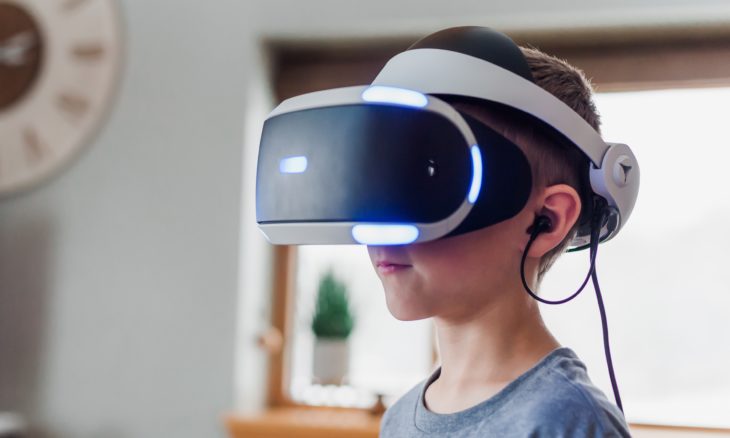
Last Updated on April 16, 2020 by Surender Kumar
As a parent, it’s tough to keep up with the new technologies that have sprung up in the classroom. From asynchronous classrooms, fully virtual classrooms, and rotation models, learning may seem like an entirely new experience from when you embarked on your education journey years ago.
Luckily, there are a few technologies present in virtual learning that are here to stay.
Learn ten ways virtual learning is being implemented in the classroom and how to navigate eLearning as a parent.
Table of Contents
1. Virtual Reality
Virtual reality (VR) allows students to go where they’ve never gone before. These computer-generated simulations create an entirely new environment for its users.
Whether visiting a space station or looking inside the human body for STEM research, this type of learning gives a new type of access to students who may have never gotten the opportunity to explore these types of topics from the comfort of their desk chair.
2. Augmented Reality
Augmented reality (AR) is similar to virtual reality, however, it overlays its computer simulations across the real world. In today’s world of non-stop simulation, AR is ideal for grabbing and keeping the attention of students. Teachers can add open-ended, characters, or speech bubbles throughout the lesson to keep students engaged in and out of the classroom.
3. Video Conferencing
As classrooms move to entirely virtual, and partly virtual classrooms, video conferencing has become a standard for face-to-face lessons and interactive learning. Video conferencing can connect students for collaborative projects and expand the accessibility of lessons for students in rural or isolated communities.
4. Online Assessments
The beauty of a virtual classroom is the immediacy of results. When students are able to take their homework, lessons, and assessments online, it allows for immediate results. This type of grading can free up teachers to give personalized attention and focus where it’s needed in lieu of grading multiple-choice tests for hundreds of students.
5. EdTech Applications
EdTech applications are now used widely across many schools. Where plenty of districts are providing laptops and tablets to their students, others are receiving homework through online platforms and applications.
As a parent, you should monitor that the websites students are being assigned to are appropriate, and will not sell data to third parties. Ensure proper parental controls are set on all school-issued and non-school-issued devices.
6. Online Whiteboard
You grew up with a chalkboard or whiteboard in the classroom, and an online version is no different. These online tools create a shared focal point for both students and teachers. Using an online version of this learning classic allows students to write directly on the material and save it for future use. Online whiteboards are highly interactive and enhance collaboration between students and teachers.
7. Discussion Boards
Discussion boards are another great collaborative tool for students. They allow students to communicate in a safe and secure environment that’s monitored by the school. These types of platforms are safer than social media and other online chatrooms because the schools can flag concerning language and prevent cyberbullying. A potential downside is a big brother connotation that students may recognize. They may find alternative ways to communicate to get around these flags and engage in negative behavior.
8. Digital Textbooks
The shift from physical books to digital ones has been dramatic and widely accepted. This shift allows accessibility to lower-income families, as they’re often less expensive at about half the cost of a physical copy. Teachers and parents should ensure their child has proper access to these books on and offline. The interactivity of digital textbooks is often preferred by students, as they can read, highlight, and make notes directly in the text.
9. Virtual Field Trips
Virtual field trips are another way schools can implement extracurricular activities on a budget. Especially in the age of social distancing, these types of online experiences can be educational and enjoyable for students, teachers, and parents alike. Students can visit the Smithsonian the same day they see the Louvre—all from the comfort of their armchair.
10. Gamification
By gamification in the classroom, teachers can reengage students like never before. This type of learning involves a structure where students need to solve a problem.
Oftentimes, teachers will create a challenge or activity students need to complete that has more than one way to be solved. This teaches students real-world problem-solving skills and expands their perspectives about learning. In some structures, these immersive games can have elaborate storylines to spark creativity for students.
Learning to parent in the digital age can be difficult. There are security concerns, accessibility worries, and overall nerves around parental controls. These new forms of educating our youth bring new opportunities, but also challenges. Beginning by learning the technologies your children are using is the first step to becoming an informed parent. Learn how to navigate this new virtual environment as a parent with the guide below.
Jessica is a Content Marketing Specialist with nearly a decade of experience in writing for her clients. When she’s not creating content that drives traffic, you can find her reading novels or hiking near her Southern California home.

